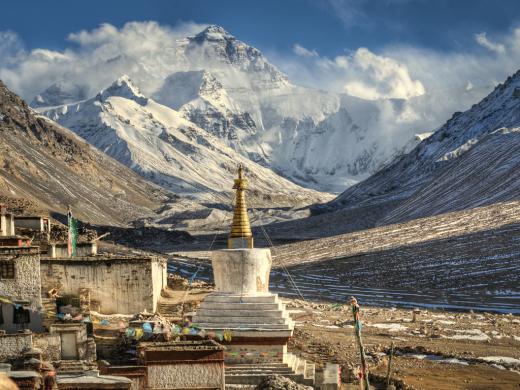The Seven Summits are the highest peaks on all seven continents of the world, and a formidable mountaineering challenge. By 2007, less than 200 climbers were on the list of those who had successfully climbed all of them, including Rob Hall and Gary Ball, who completed all seven in seven months in 1990, and the first woman to summit all seven, Junko Tabei, in 1992. The mountains of the Seven Summits represent demanding technical challenges, and only highly experienced climbers should attempt them.
Usually, the Seven Summits are listed as Kilimanjaro, Denali, Elbrus, Aconcagua, Puncak Jaya, Vinson Massif, and Mount Everest. This list was compiled by Reinhold Messner, who refined an earlier list made by Richard Bass, who also wrote the book Seven Summits. Many climbers who successfully complete the Seven Summits move on the Second Seven Summits: Mount Kenya, Mount Tyree, Puncak Trikora, K2, Dykh-Tau, Mount Logan, and Ojos del Salada. Some climbers have argued that the peaks of the second set, especially K2, represent a much more intense technical challenge than their taller counterparts.

The highest peak in the Seven Summits is, of course, Mount Everest, at 29,029 feet (8,848 meters). Mount Everest is located in the Himalayan mountains of Asia, and is sometimes also called the “Summit of the World” because it is the highest point on Earth. The next highest peak is Aconcagua, located in the Andes Mountains of South America in between Chile and Argentina. Aconcagua is 22,481 feet (6,962 meters) tall. North America hosts the third tallest mountain on the list, Denali, also known as Mount McKinley, located in Alaska with a height of 20,320 feet (6,194 meters).

The fourth mountain in the Seven Summits is Kilimanjaro, in Africa, which towers over the plains of Kenya at 19,339 feet (5,895 meters). Eastern Europe's Mount Elbrus, in the Caucasus, is next on the list, with a height of 18,481 feet (5,633 meters)—some people prefer to list Mount Blanc as the highest peak in Europe, not counting the Caucasus as part of that continent. Antarctica's Vinson Massif follows, with a height of 16,067 feet (4,897 meters), and the final peak is Puncak Jaya, also known as Carstensz Pyramid, in Indonesia, with a height of 16,023 feet (4,884 meters). This last mountain, representing Australasia, is disputed: some mountaineers prefer Australia's Mount Kosciusko, which has around half the height of Puncak Jaya, but is also properly located in Australia, rather than Oceania.
